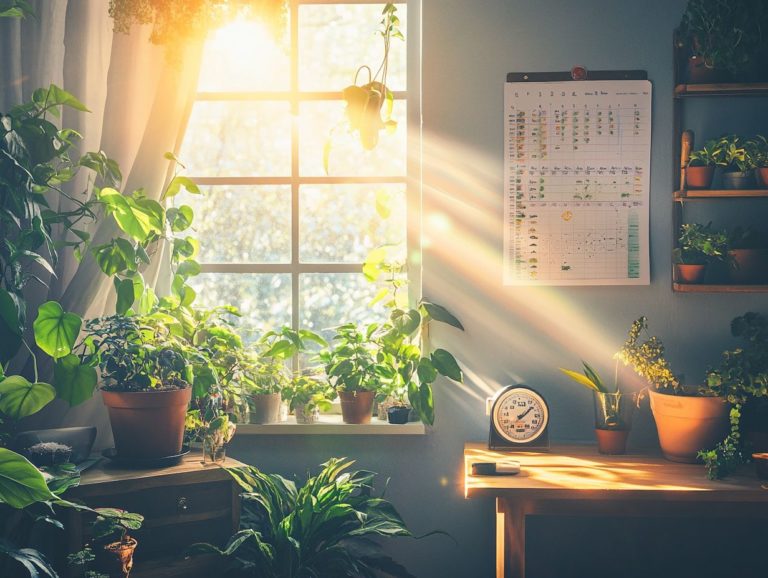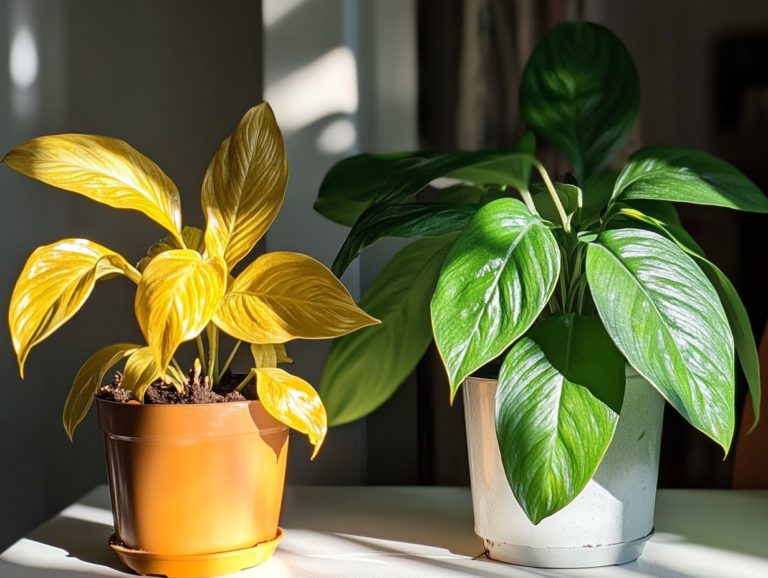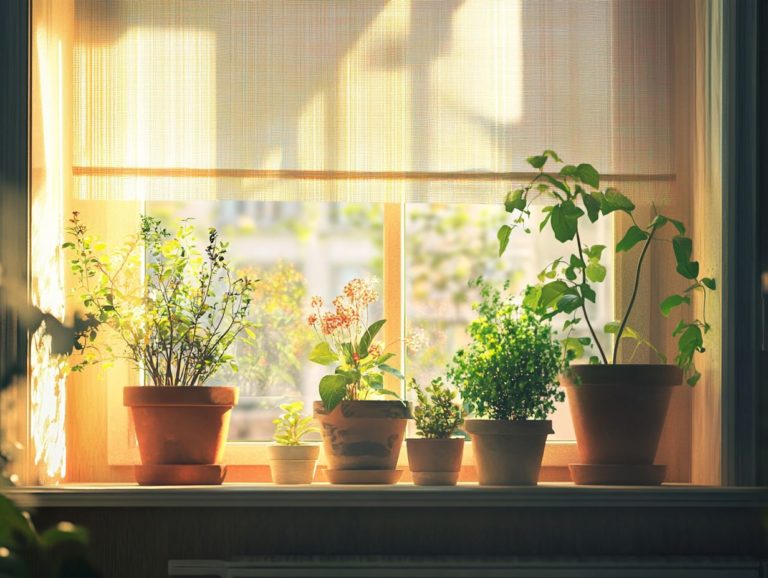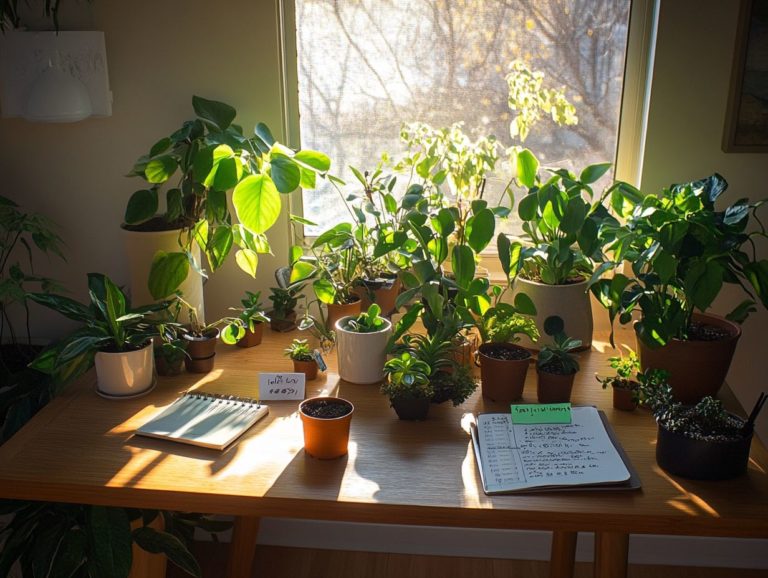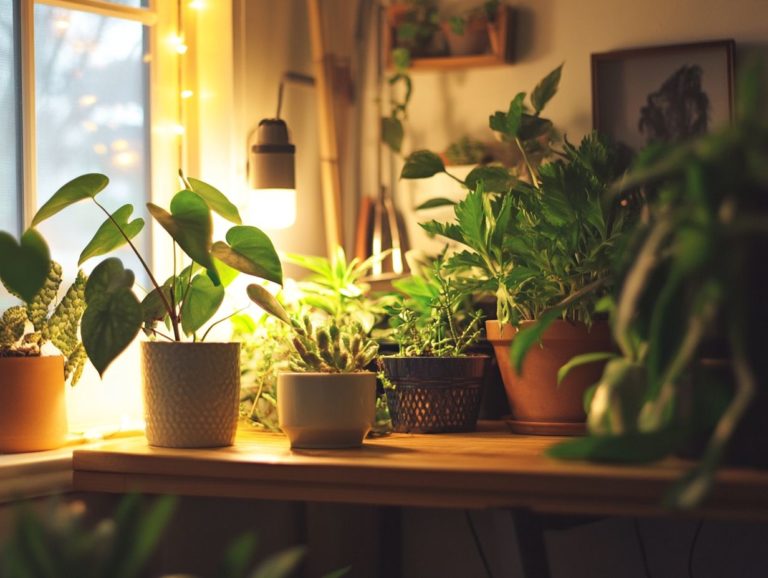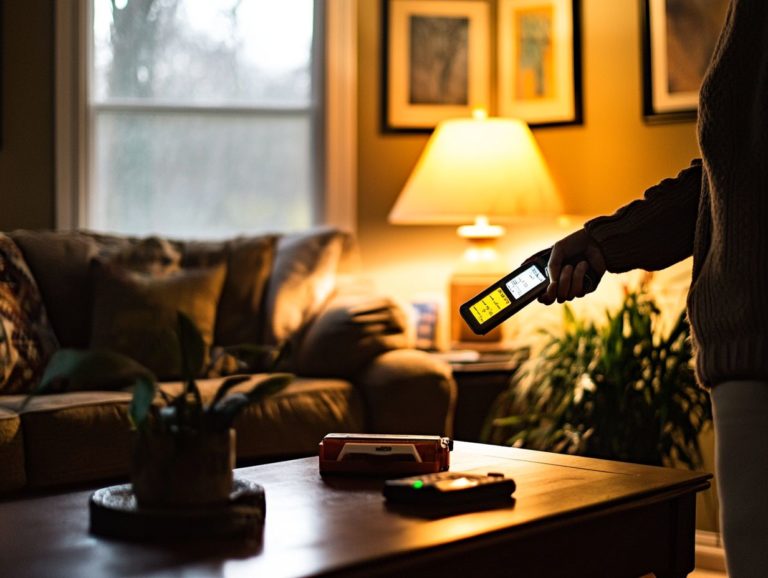How to Care for Plants in Different Light
Knowing your plants’ light needs is key to a thriving indoor garden. Some plants prefer low light, while others need bright, direct sunlight.
This guide will help you identify and care for low, medium, and high-light plants. Create the best conditions for growth in your home.
Contents
- Key Takeaways:
- Understanding Plant Light Requirements
- Low Light Plants
- Medium Light Plants
- High Light Plants
- Adjusting Light Levels for Indoor Plants
- Frequently Asked Questions
- What are the best types of plants for low light conditions?
- How often should I water plants in low light?
- Can I grow succulents in low light?
- What are some signs that my plant is getting too much light?
- How can I help my plants adjust to different light conditions?
- How do I know if my plant is getting enough light in its current location?
Key Takeaways:
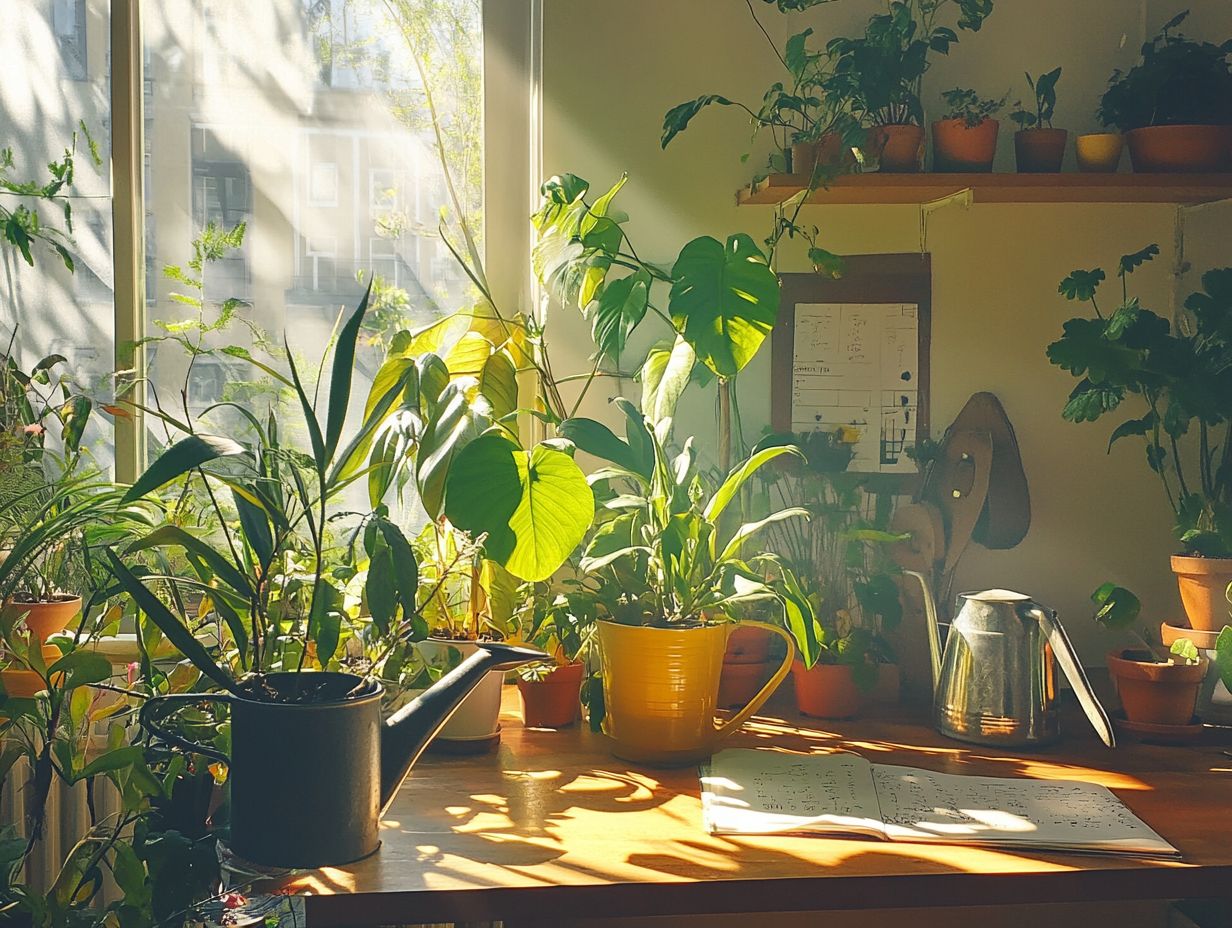
- Understand the types of light and their effects on plant growth to find the best spots for your plants.
- Identify low, medium, and high light plants to ensure proper houseplant care and growth.
- Adjust light levels by providing adequate natural or artificial light and using grow lights when necessary.
Understanding Plant Light Requirements
Understanding your plants’ light needs is essential for thriving indoor gardening. Each plant has unique light requirements some thrive in low light, while others need bright indirect light or direct sunlight.
By recognizing these needs, you can elevate your indoor space s beauty. You also promote healthy growth, allowing your plants to release oxygen and flourish.
Types of Light and Their Effects on Plants
Different light types profoundly influence your indoor plants’ health. It’s essential to understand the differences between direct sunlight, bright indirect light, and low-light conditions.
For example, cacti and succulents thrive in direct sunlight. In contrast, the Snake Plant and Fiddle Leaf Fig prefer bright indirect light, which encourages growth.
During long winter months, when sunlight is scarce, you can use artificial light to create ideal conditions.
This knowledge helps you make informed decisions for your plants’ specific needs. Leafy companions like Pothos and Philodendrons flourish in low light and add lush greenery to dim corners.
Using grow lights harnesses specific wavelengths to enhance photosynthesis, allowing your plants to thrive in less-than-ideal lighting.
With the right mix of natural and artificial light, you can cultivate a vibrant indoor oasis that promotes healthy growth.
Low Light Plants
Low light plants are perfect for areas with limited sunlight, making them ideal for urban apartments or offices. They adapt well to lower humidity levels and showcase their resilience.
Popular options include the ZZ Plant and Pothos. They require minimal care yet provide lush foliage that enhances your indoor environment.
By understanding the needs of these plants, you can create a vibrant indoor garden that thrives in challenging light conditions.
Identifying Low Light Plants
Identifying low light plants is essential for enhancing your indoor gardening experience in spaces with limited natural light. Many indoor plants, like the Snake Plant and Peace Lily, thrive in low light conditions while adding a touch of elegance to your environment.
These shade-loving companions are incredibly resilient and can flourish in areas with reduced humidity, making them perfect for bathrooms or north-facing rooms. By understanding which plants excel in low light, such as Fishtail Palms, you can make informed choices that elevate your plant collection.
In addition to the Snake Plant and Peace Lily, the ZZ Plant and Pothos are also great choices for your dimly lit spaces. The ZZ Plant boasts thick, waxy leaves that store water, allowing it to withstand occasional neglect, while the Pothos features stunning trailing vines that can gracefully cascade from shelves or hanging baskets.
To keep these plants happy and healthy, it’s vital to water them sparingly, ensuring the soil dries out slightly between waterings. Positioning them in areas with indirect light will maximize their growth potential without bombarding them with direct sunlight, which can cause leaf burn.
Caring for Low Light Plants
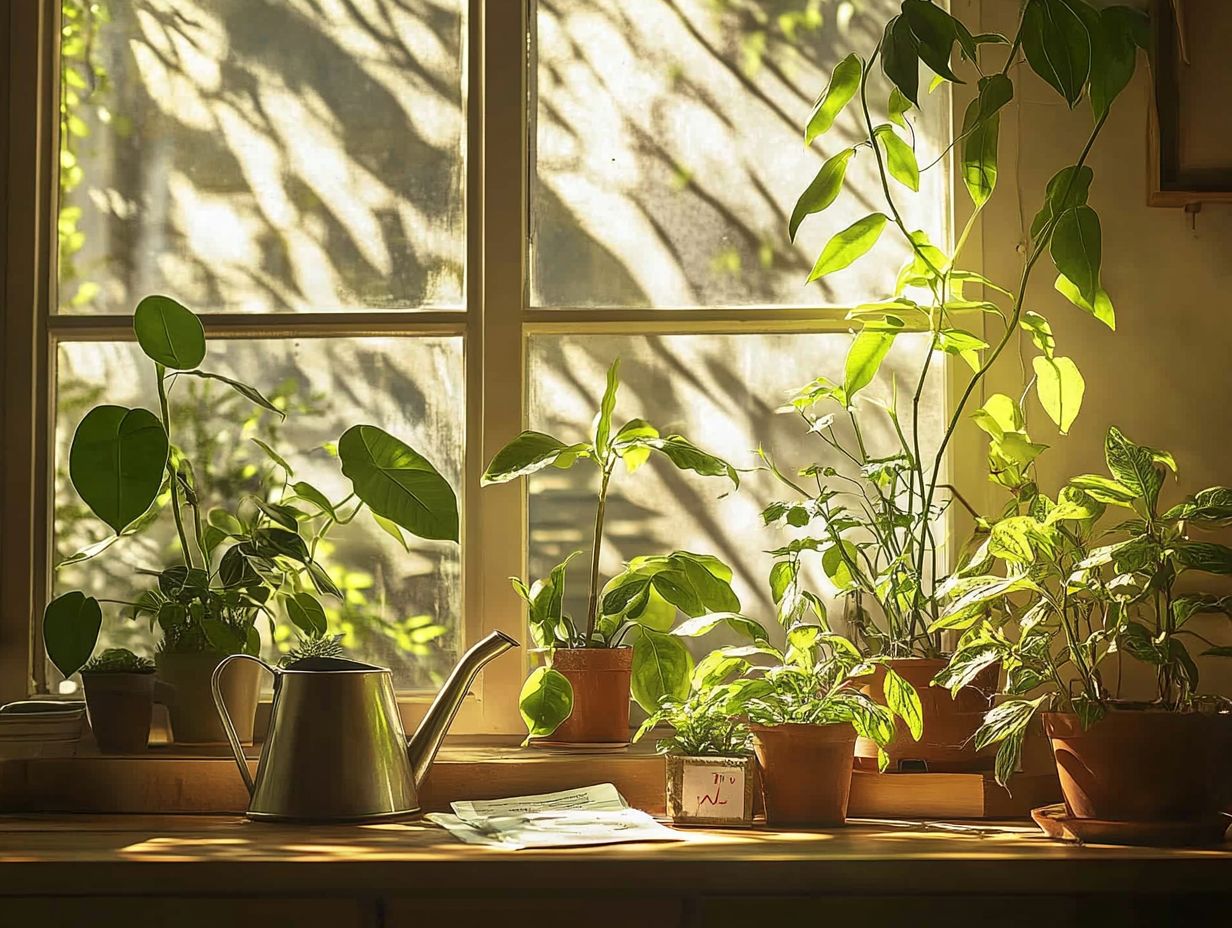
Caring for low light plants can be a rewarding journey! Understanding their unique needs ensures they thrive in any home. One of the key aspects of your plant care routine will be selecting the right watering method. This often means watering less frequently to prevent issues like root rot, a condition where the roots decay because of too much water.
You ll also want to choose a soil composition that retains moisture without becoming overly saturated. Keep a close eye on humidity levels, as many low light plants thrive in moderate humidity, which you can achieve through misting or using pebble trays.
Take snake plants and pothos, for instance. These are exceptional low light choices that thrive in a well-draining potting mix, ideally enriched with organic matter. Allow the soil to dry out a bit between waterings; checking the top inch of soil is a reliable gauge for this. To maintain the humidity your plants crave, consider grouping them together or placing a humidifier nearby.
Don’t forget about regular dusting of the leaves. Not only does this enhance their appearance, but it also boosts their efficiency in photosynthesis, enabling them to thrive in dimly lit corners of your home.
Medium Light Plants
Medium light plants are the perfect companions for your indoor spaces, flourishing in environments where they bask in a balanced amount of natural light. These versatile plants thrive with just the right amount of water!
Take the Dracaena Lisa and Monstera Deliciosa, for instance both adapt beautifully to moderate light conditions and showcase stunning foliage. By grasping their specific water needs and light exposure, you can cultivate a flourishing indoor garden that enhances your living space, making it a sanctuary for your plants.
Identifying Medium Light Plants
Identifying medium light plants is crucial for crafting an indoor garden that thrives under moderate sunlight and bright indirect light. Plants like the Fiddle Leaf Fig and Birds of Paradise do exceptionally well in bright, indirect light, making them perfect for spaces with expansive windows or filtered sunlight. By understanding the specific needs of these plant types, you can ensure they receive the appropriate amounts of light and care, fostering healthy growth and vibrant foliage.
Beyond Fiddle Leaf Figs and Birds of Paradise, consider adding other standout medium light plants to your collection, such as the Snake Plant, Pothos, and ZZ Plant. These varieties are well-suited to indoor environments and often boast unique leaf patterns and textures that elevate the aesthetic of any space.
For optimal care, ensure proper drainage and water only when the top inch of soil feels dry to the touch; this practice can help prevent root rot. Additionally, occasionally dusting the leaves will keep them looking their best.
With the right lighting and care regimen, these plants can become striking focal points, infusing your indoor environment with life and color. Start your indoor garden today and watch your space transform with vibrant greenery!
Caring for Medium Light Plants
Caring for medium light plants requires a thoughtful approach and proper plant care tips to ensure they thrive in their optimal light conditions. Regularly assessing their water needs is crucial, as these plants generally prefer well-draining soil that allows for proper airflow and moisture retention.
Understanding the light intensity is vital for maximizing their growth while avoiding issues like leaf burn. Incorporating the right soil composition will also play a significant role in their overall health and appearance. For more tips on using sunlight for indoor plants effectively, consider exploring various lighting strategies.
Plants such as the Snake Plant, Pothos, and Spider Plant make excellent examples of those flourishing in medium light. Water only when the top inch of soil feels dry, which can vary depending on the local humidity and temperature. A mix of potting soil combined with perlite or sand will promote the desired drainage.
Keep an eye on the light throughout the day to find the best spot for your plants, ensuring they receive just the right amount without becoming scorched. By tailoring your care strategies to their specific needs and understanding indoor light levels and plant selection, you can create a thriving indoor garden that flourishes beautifully.
High Light Plants
High light plants are those that truly thrive in direct sunlight, making them ideal for bright indoor spaces or sunrooms. They often include popular varieties like Dracaena Lisa and Monstera Deliciosa. These plants typically need generous watering and well-draining soil, such as potting soil, to support their rapid growth while preventing problems like root rot.
Varieties such as cacti and succulents not only flourish in these conditions but can also adapt to different humidity levels. Knowing which types flourish in high-light conditions helps you curate a vibrant collection that not only enhances your indoor space but also promotes optimal growth.
Identifying High Light Plants
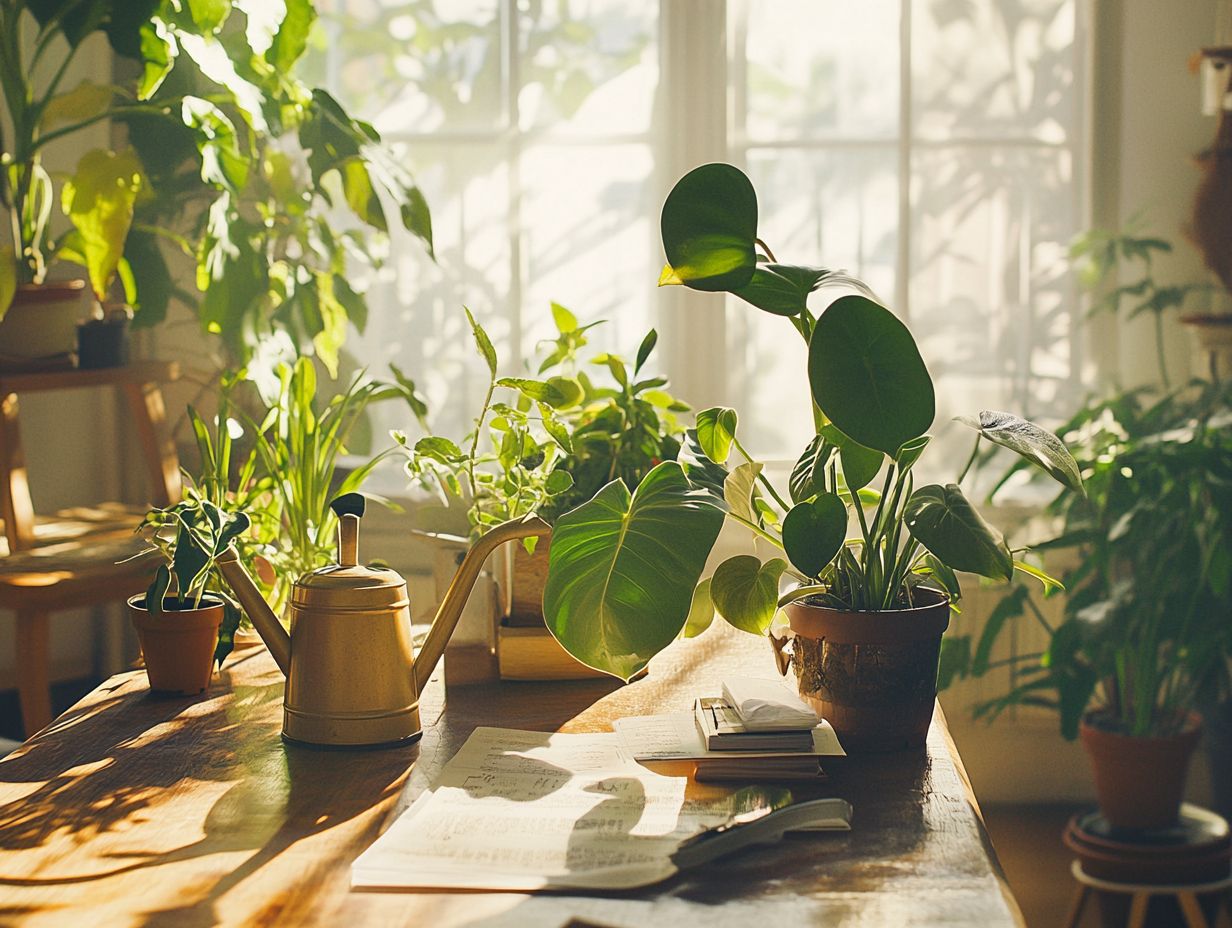
Identifying high-light plants is crucial for unlocking the full potential of your indoor garden, particularly in areas that bask in abundant sunlight. Plants like the Tiger Evergreen and Braided Money Tree are champions of direct sunlight and can easily adapt to varying humidity levels.
Understanding the specific light exposure needs of these plants is key to ensuring they thrive in their chosen spots. For example, succulents typically crave bright, direct sunlight for several hours each day, while foliage plants like the Chinese Evergreen prefer bright, indirect light. To learn more about this, check out our guide on understanding indoor plant light needs.
Providing the right care such as enough water and some feeding during the growing season will result in healthier, more robust plants. Additionally, identifying light needs of various plants and strategically positioning them near south-facing windows will maximize their exposure, ensuring they remain vibrant and lush, regardless of the season.
Caring for High Light Plants
Caring for high-light plants demands a clear understanding of their unique needs regarding sunlight exposure and soil composition. These plants thrive on frequent watering and well-draining soil; after all, overwatering can spell disaster with root rot.
Regularly monitoring their growth and adjusting care based on shifting light conditions will ensure they remain healthy and vibrant. Providing the right environment will transform your indoor space into a lush garden brimming with stunning greenery.
To achieve the best results, consider a potting mix that includes components like perlite, a lightweight volcanic glass that improves soil aeration, or sand, which can dramatically enhance drainage perfect for species such as succulents or cacti. Regarding watering, using a moisture meter, a tool that helps you check soil moisture levels, or simply sticking your finger into the soil to check for dryness is a wise strategy, helping you avoid the pitfalls of both under- and overwatering.
Position these plants near south- or west-facing windows where they can soak up ample direct sunlight, fostering optimal growth. To ensure they receive the best light, refer to this guide on how to position plants for best light. As you tune in to your plants’ responses, you’ll discover that attentive observation combined with consistent care will lead to a flourishing display of greenery in your home.
Adjusting Light Levels for Indoor Plants
Adjusting light levels for your indoor plants is essential for maximizing their growth and health, particularly in spaces with inconsistent natural light.
By using tools like a light meter a device that measures the amount of light in an area you can pinpoint the exact amount of light each plant needs. This enables you to devise effective placement and care strategies.
Incorporating grow lights can further enhance natural sunlight, ensuring your indoor plants receive the necessary light intensity year-round. Master these techniques, including how to manage light for tropical plants, to make your indoor garden flourish!
How to Provide Adequate Light for Indoor Plants
Providing adequate light for your indoor plants requires you to grasp their specific light needs and make adjustments as necessary. This means monitoring light levels with a light meter to determine whether natural sunlight suffices or if you need to supplement with grow lights.
Tailoring sunlight exposure to each plant s individual requirements is essential for promoting healthy growth and avoiding issues arising from insufficient light.
To achieve optimal results, use a light meter to assess the intensity of light in various areas of your home. This helps you find the best places for your plants to thrive. When natural light falls short, investing in high-quality grow lights can effectively mimic sunlight, ensuring even the hungriest varieties thrive.
Understanding seasonal changes in daylight hours is crucial. Adjust plant placements accordingly to maximize the benefits of your available light sources, keeping your indoor greenery vibrant and robust.
Frequently Asked Questions
Got questions? Here are some common queries about light conditions for your plants.
What are the best types of plants for low light conditions?
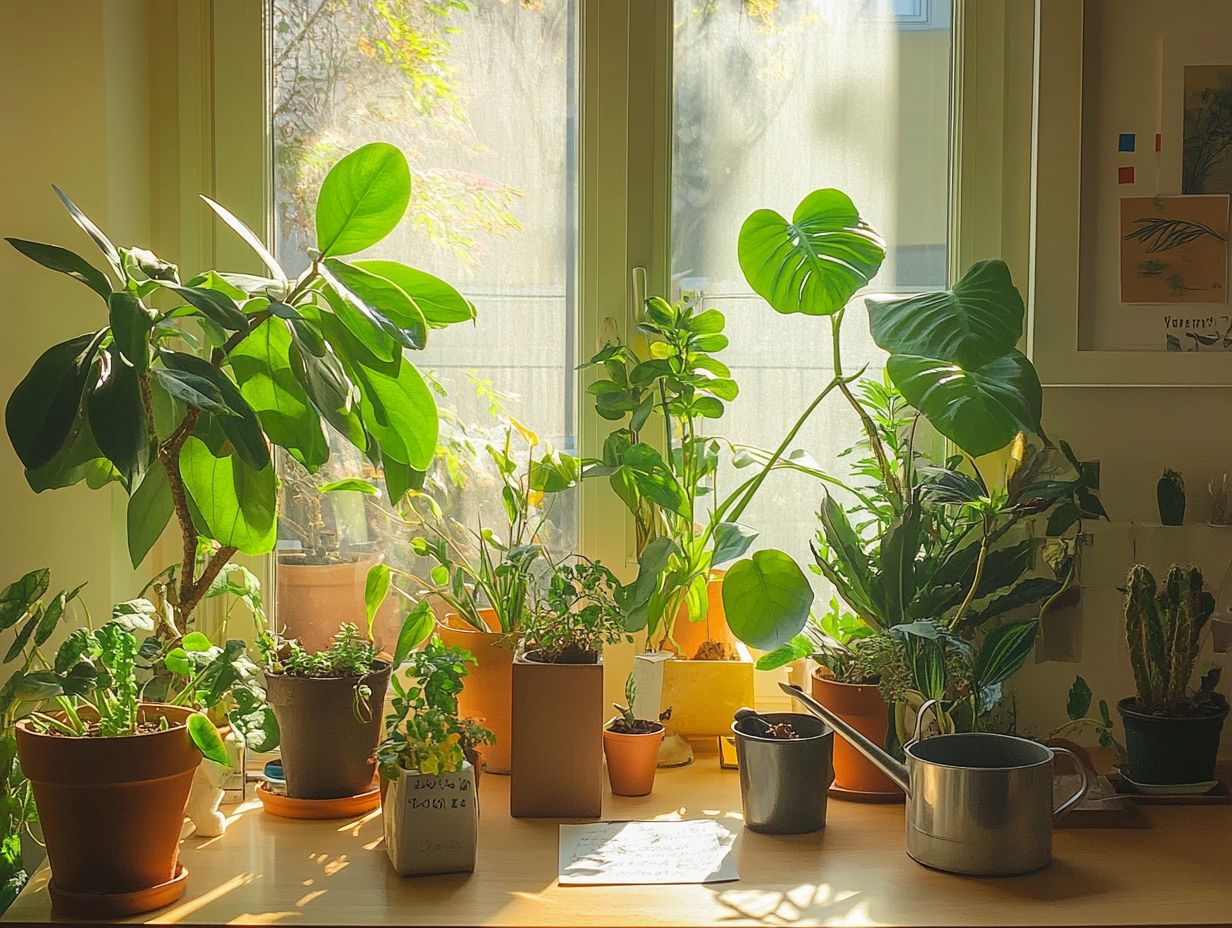
Plants such as pothos, snake plants, and ZZ plants are great options for low light environments.
How often should I water plants in low light?
Plants in low light require less water, so it’s important to let the soil dry out slightly between waterings.
Can I grow succulents in low light?
Succulents prefer bright, indirect light and may not thrive in low light conditions. Consider placing them near a window for optimal growth.
What are some signs that my plant is getting too much light?
If your plant’s leaves are turning yellow or brown, it may be getting too much light. Wilting and leaf burn are also signs of overexposure to light.
How can I help my plants adjust to different light conditions?
Gradually acclimate your plants to their new light environment by increasing or decreasing the amount of light they receive over a few weeks.
How do I know if my plant is getting enough light in its current location?
Check the plant’s growth and overall health. If it’s thriving and producing new leaves, it’s likely getting enough light. If it’s struggling, consider moving it to a brighter or darker spot.
Start adjusting your plant’s light today for a thriving indoor garden!

